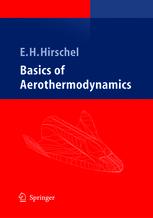

Most ebook files are in PDF format, so you can easily read them using various software such as Foxit Reader or directly on the Google Chrome browser.
Some ebook files are released by publishers in other formats such as .awz, .mobi, .epub, .fb2, etc. You may need to install specific software to read these formats on mobile/PC, such as Calibre.
Please read the tutorial at this link: https://ebookbell.com/faq
We offer FREE conversion to the popular formats you request; however, this may take some time. Therefore, right after payment, please email us, and we will try to provide the service as quickly as possible.
For some exceptional file formats or broken links (if any), please refrain from opening any disputes. Instead, email us first, and we will try to assist within a maximum of 6 hours.
EbookBell Team

4.0
26 reviewsThis book gives an introduction to the basics of aerothermodynamics, as applied in particular to winged re-entry vehicles and airbreathing cruise and acceleration vehicles. Beginning with a broad vehicle classification and a discussion of the flight environment, Basics of Aero-thermodynamics focuses on flight in the earth's atmosphere at speeds below approximately 8.0 km/s at altitudes below approximately 100.0 km.
At such flight conditions the outer surfaces of hypersonic flight vehicles primarily are radiation cooled. This is taken into account by an introduction to the problem of the thermal state of the surface, and especially to the phenomena connected with surface radiation cooling. These are themes, which reappear throughout the remaining chapters. The implications of radiation cooling are different for the different vehicle classes. In any case the properties of both attached viscous and separating flows as well as thermo-chemical effects at and near the vehicle surface need to be considered.
After a review of the issues of transport of momentum, energy and mass, real-gas effects as well as inviscid and viscous flow phenomena are treated. In view of their special importance for airbreathing hypersonic flight vehicles and for the discrete numerical methods of aerothermodynamics, considerable discussion is devoted to the issues of laminar-turbulent transition and turbulence, which follows a treatment of strong-interaction phenomena. Finally, simulation techniques for aerothermodynamics are considered, including computational methods and their modelling problems, as well as the problems of ground facility and in-flight simulation, including the hot experimental technique. The implications of Oswatitsch's Mach number independence principle are also treated.
The book is for graduate students, doctoral students, design and development engineers, but also for technical managers. The reader should be familiar with the basics of fluid mechanics, aerodynamics, and thermodynamics.